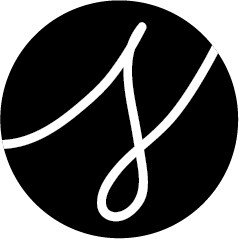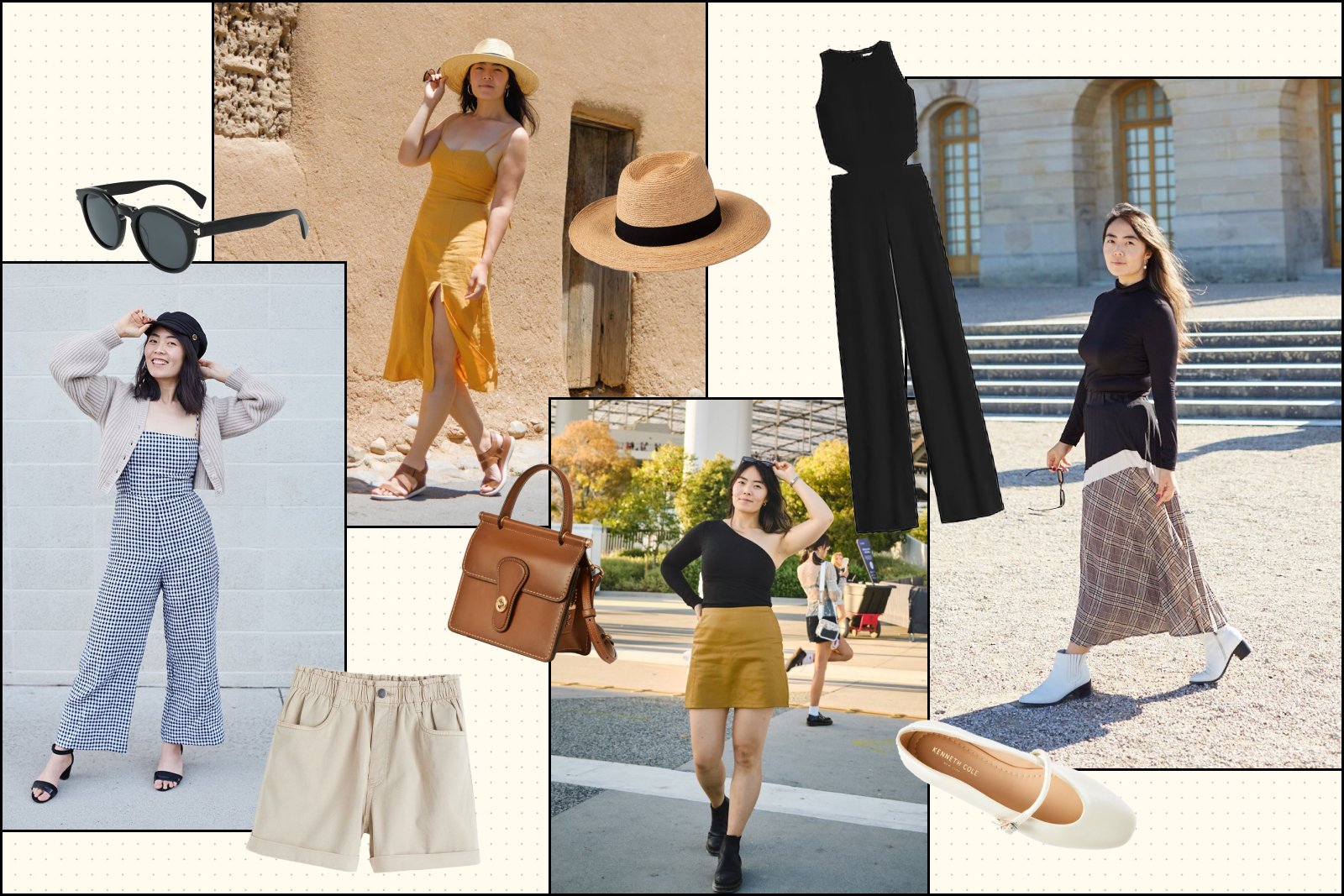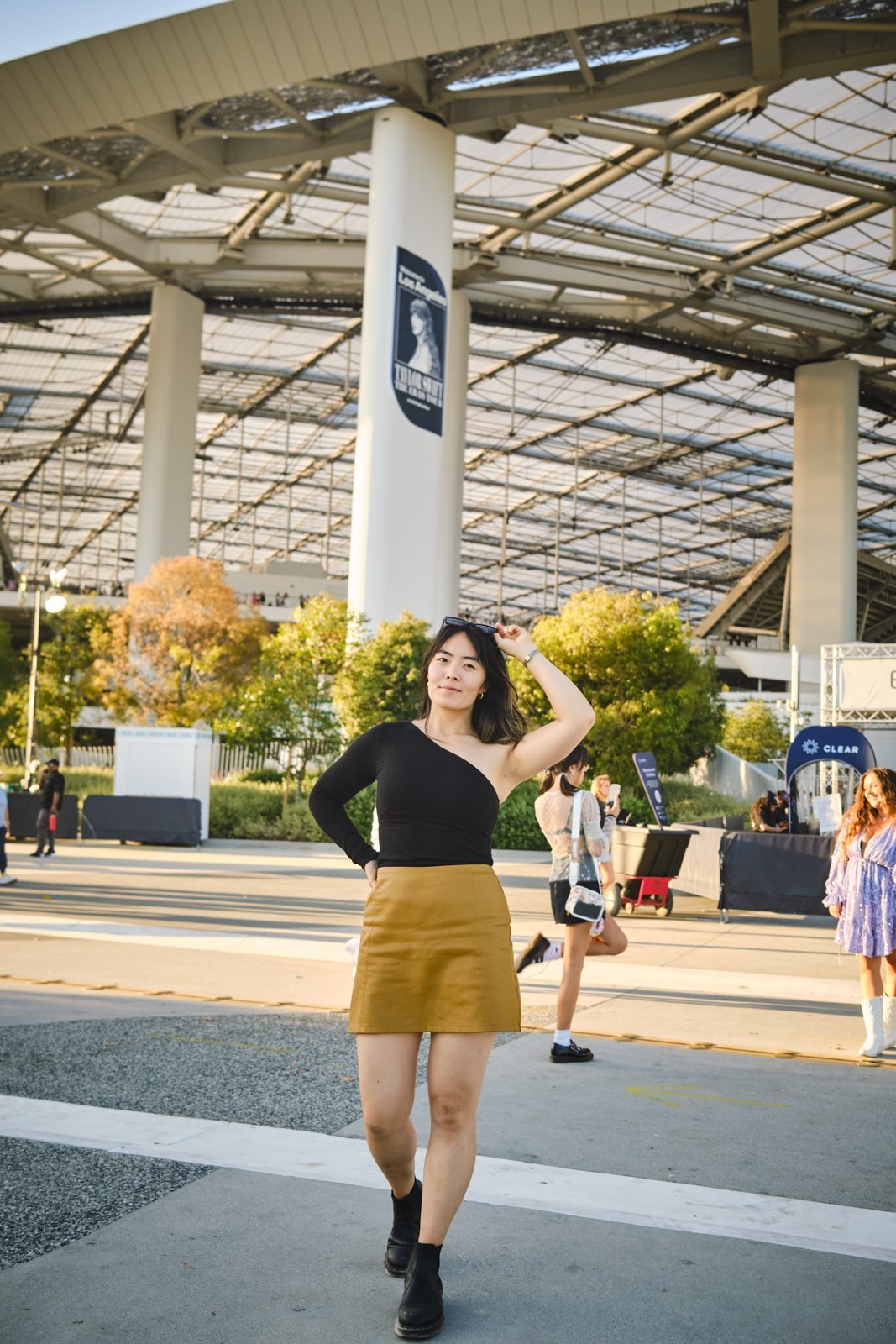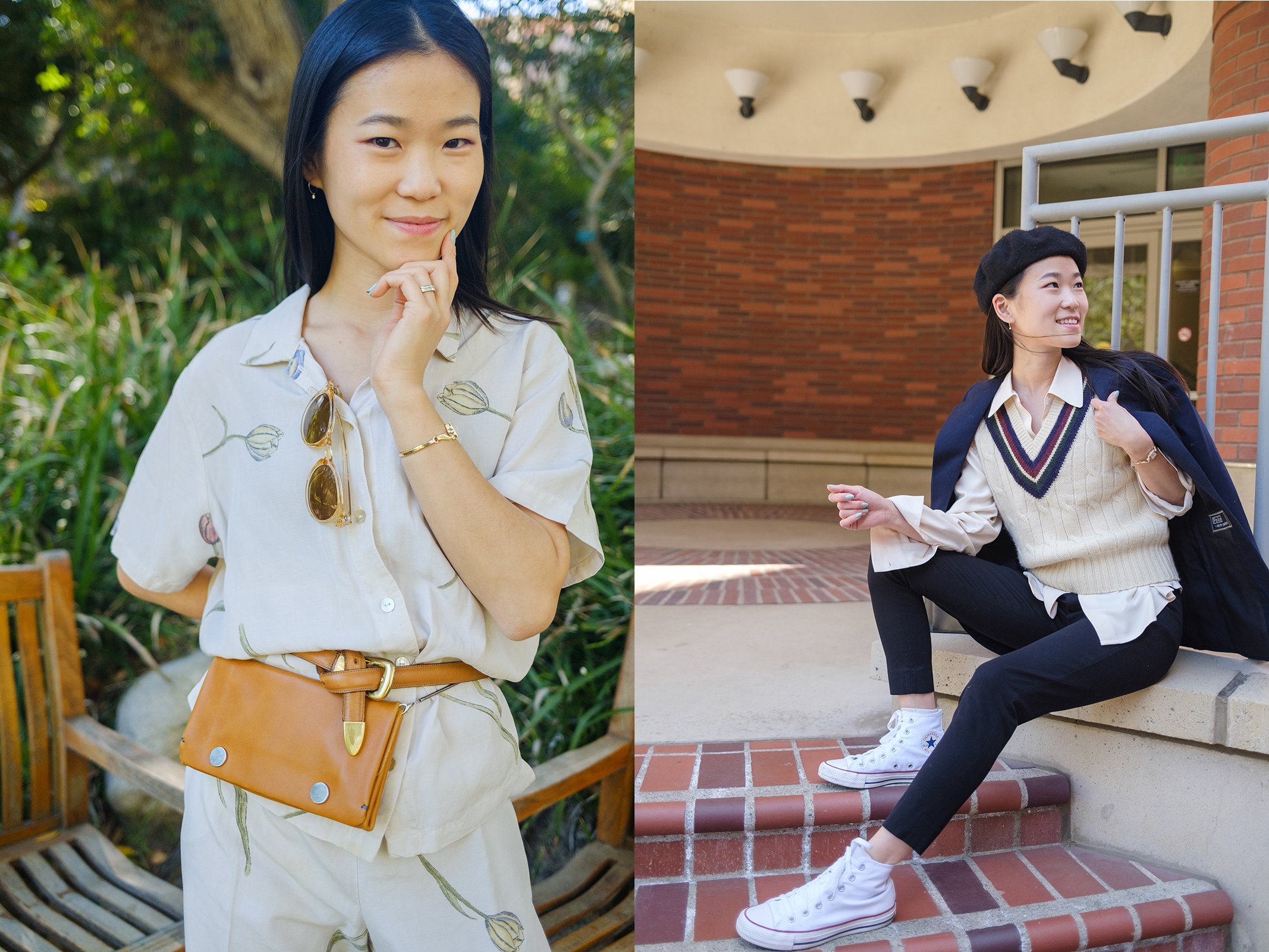A Style ~Grow~ Up
Other than drawing, fashion is my oldest hobby. People tend to associate it with shopping and consumerism, but it’s so much more than that. I love to play, discover, and work towards defining my personal style, creating a wardrobe that helps me get dressed with confidence. There’s something immensely creative about expressing yourself through personal style, which is an ever-changing challenge with dynamic factors like seasons, settings, fashion trends, and body changes. It takes time, effort, and practice, but the best part is that once you have this all figured out, trends and capitalism no longer define you. You’re able to own and present yourself in a way that’s uniquely you.
I get inspired by a number of Youtubers with a strong sense of personal style, like Lydia Tomlinson, Dearly Bethany, and Audrey Coyne. I also love to learn about the history of trends from channels like Mina Le and ModernGurlz. These ladies have helped shape my perspective towards personal style, which I’m thrilled to discuss in this blog post.
What is fashion worth?
Let’s get philosophical. I believe clothing is a tangible depiction of a person’s social and personal identity, giving those around them an idea of who they are and who they aspire to become. For me, getting dressed is about making myself feel good. It’s about getting to control how to present my authentic self (i.e. how I see myself) to the world — that I’m creative, I have good taste, and I value myself. Through style, I can infuse my own taste and passion for things into what I wear. It’s my way to sync the internal with the external.
Fashion is also my superhero cape that helps me accomplish what I set out to do. It shifts my attitude and gives me the confidence to meet new people and feel like I belong in the room. It determines my body language and level of energy, and helps me mentally step into the person I want to be and present at that moment in time. Dressing well and appropriately is also a form of good manners. Clothing is more powerful than it seems.
“Fashion is a way of communicating ideas, values, and aspirations through clothes. Through our attire, we announce who we are, what we care about, and where we belong - or aspire to belong - in society.”
However, dressing up can be hard. In our busy lives, it’s difficult to be “creative” on the daily when you have to rush out the door. That’s why we turn to science.
Dressing for the environment: a styling principle I picked up from observing the genius that is blogger Gary Pepper Girl. It’s fun to experiment and try out a new identity in a foreign place.
1. Style Principles
As with design or any system expected to operate with consistency, principles serve as the foundation to keep values and guidelines front and center. My wardrobe principles serve me by reminding me of my goals when it comes to outfit choices and purchase decisions. It’s a compass that helps me decide where I want to invest, so I don’t get distracted by the next shiny thing while building my wardrobe collection.
Part 1a: Understanding my style
My style has been influenced by trends growing up, but as I’ve settled into adulthood, it’s become more perennial. I love contrast in my outfits, whether it mixes feminine and masculine, casual and dressy, tight and flowy, classic and edgy, polished and relaxed, skin-bearing and covered up. I mix higher end pieces with basics, going for sophistication but also effortlessness. On the daily I’m drawn towards 70s-inspired trends, but always mixed with a bit of preppy-ness and structure. I believe this style represents the kind of person I want to present myself to be.
People who have influenced and shaped my style over the years: Gary Pepper Girl, Extra Petite, With Love From Kat, Kate Middleton, Best Dressed, and many more.
Part 1b: Principles for categories of clothing
Most of my outfits involve separate tops and bottoms, so tops are important staples to define. They are also the piece that frame my face and show on Zoom calls. I have basic styles as well as fancier blouses that add more style to an outfit. However, I do rely on my basics the most, especially at home and when layering for the cold. For blouses, I like to have a little fun, so I look for simple patterns, cutouts, ruffles, or sleeve details that add some flair to or dress up the jeans I’m likely to pair with them.
Because of weather and movement practicality, I gravitate towards pants most days. The inseam and cut of my pants are important because they need to match my shoe collection. All my pants are high-waisted, because they flatter my long-torso-short-leg figure, cinching me at my natural waist.
Skirts are typically reserved for more dressy occasions, although I should try to incorporate them more in the warmer months. Most of my skirts are in summer fabrics, and in a pleated silhouette. I want to look for more chic straight line skirts that don’t drag around a ton of fabric, which can be hard to sit and travel with.
Dresses can be more experimental in terms of style, pattern, and cut because they’re an entire outfit in one. They’re typically for 3 different occasions: formal party, casual everyday, and warm-weather vacations. Long sleeve dresses are more my style, and more suitable for the weather I live in. I also like midi lengths that feel more mature and timeless. For warm-weather vacations, I need to maximize my existing wardrobe and make outfits I’ll love to wear without buying more.
Because jackets are the first impression, they are here to make a statement. I want unique high quality pieces that are versatile and epitomize my style. I look for pieces that are neutral in color but have an edge to them, like a leather jacket with a unique cut, a denim jacket with fringe detailing, or a trenchcoat in a denim fabric. Stuff you won’t see other people wearing as often, and have lots of structure to complement my naturally softer figure.
I’m not typically a sweater person because I think they’re uncomfortable. They’re itchy at the neck and wrists, and I have to find the perfect layering piece to avoid that. I like wool but not the feel of it against my skin. My favorite sweaters are the fitted crewneck thin cashmere ones that I layer with. I also like cardigans as an easy layering piece over sleeveless tops.
I like wearing a bit of a heel (it makes me stand straighter and feel more put together) but I’ve also made many mistakes buying the highest heels ever for one-off occasions. I need to look for shoes around the 2.5-inch mark, for chunky heels and kitten heels. My shoes are all black, brown, and white for easy pairing, with pointed toes to lengthen my legs. In my wardrobe, they work the hardest.
For hats, belts, and bags, I tend to keep these simple and extremely versatile. They take up too much physical space in my closet so I have to make sure to enforce a limit.
A simple winter outfit combo to keep me warm but stylish. Do not underestimate how much a coat and structured hat can elevate your look.
An old money ensemble to visit Windsor, England. This outfit combines a vintage prep school blazer and a prim little dress suited for afternoon tea. And of course, good walking boots, because I’m just a tourist not a royal duchess.
2. Outfit Formulas
Over the years I’ve slowly learned to accept my body and and dress for it. It’s required a lot of trial and error, but only after experimentation have I finally confirmed which fabrics, shapes, cuts, and silhouettes work for me. For my softer upper body shape, asymmetry and sharp lines are flattering. Square necklines and off-the-shoulder sleeves accentuate my collarbone/shoulder area while drawing attention away from my arms. A defined waist is vital for my hourglass shape and long torso. And a midi length skirt hides my shorter upper legs while lengthening my height. I know my strengths and I leverage them. When shopping, it’s empowering to just know whether clothing items will look good on me, so I don’t get swayed by the size 0 models in the photos.
Silhouette-wise, I tend to pay attention to how the top and bottom of an outfit come together. If a top is more form-fitting (e.g. form-fitting turtleneck), the bottom is looser (e.g. a skirt or flared jeans). If I’m feeling like skinny jeans, I throw on a looser top (e.g. a blouse with ruffles) or a jacket with structure (e.g. coats, blazers). The skirt length or pant shape also determine my shoe choice, both in seasonality and bulkiness. This knowledge has led me to gravitate towards basic outfit formulas that flatter my figure and style preferences:
Formula A:
A-Line
This is inspired my the feminine side of my personal style that is drawn to the 70s and vintage flair. This easy versatile outfit combination works for all seasons, and is typically composed of a top tucked into a midi skirt. In the summer, this is a tank top, lightweight cotton skirt, and sandals. In the winter, it’s a sweater, thicker fabric skirt, and boots. It’s dressy without being too dressed up, and creates a nice feminine shape without showing too much skin.
Formula B:
Bootleg / Flares
A long flared pant cut just works for my height. It’s structured and smart, but loose and effortless at the same time. Its versatility makes it one of the easiest shapes to dress up or down depending on the material, whether it’s denim, corduroy, cotton. A little western and 70s-inspired, à la Jane Birkin. It is, however, incredibly hard to fit pants that fit me perfectly in length, waist, rise, and bagginess, so I’m constantly on the hunt for more options.
Formula C:
Cigarette / Straight
I also love the preppy-ness and down-to-earth elegance of a cigarette-cut pant. It’s classic, Parisian, and menswear-inspired. The high rise waist visually lengthens and slims the legs and the cropped cut accentuates the ankle. Like the flared cut, it can also be dressed up or down. Envision pairing a cotton pair with a blazer and a loafer to create a suit, or wearing a denim pair with a casual linen button down and sneakers for a casual look. A straight leg jean makes using this formula my most-worn combination on a daily basis.
Formula D:
Mini Skirt
When I want to dress up just a tad bit more, the mini skirt formula makes me feel extra put-together. Because of its short length, the skirt must be a-line to not look too nightclub-y, and always paired with boots and a more modest top to not show too much skin. Since this is more dressy, smarter blazers or coats complete the look, preferably longer in length to contrast the shorter shirt hem. Add tights and/or a structured jacket for warmer weather. An alternate variation of this outfit could also be shorts in place of the skirt.
Formula E:
Jumpsuit
Because they are an entire outfit in one, the jumpsuit itself is the statement piece of the entire look, which means I can be a lot more casual, playful, and experimental when shopping for jumpsuits. I’ve accumulated jumpsuits for varying seasons in varying fabrics, and can swap out shoes to dress them up or down. One of my most versatile pieces is a black Express jumpsuit that I’ve worn to both formal and casual settings. I’ve always found the LBD to be too formal yet plain for my taste. An LBJ is where it’s at.
Formula F:
Dress
Last but not least, the dress. The dress is typically midi length and flowy, but always cinched at the waist. I give myself a lot of room to experiment here as well, but tend to lean towards colorful and bohemian styles and cuts. I love a long sleeve, an asymmetrical slit, a smocked back, and a low waist to fit my longer torso and avoid the babydoll/empire waist silhouette. Aside from occasion dresses, my casual dresses divide themselves into vacation-wear and everyday wear. Accessorize with a hat to add interest.
These style uniforms simplify the work it takes to build a wardrobe where pieces can much more easily pair with one another.
3. A Method for Investing
With principles and formulas established, shopping becomes a lot easier because I can shop with intention rather than occasion. Back in the day, I always shopped in preparation for my next warm-weather vacation destination. I’d end up with loud floral print maxi dresses I’d never get to wear in my everyday because I’d have to wait for the perfect occasion. Nowadays, I treat my wardrobe as a collection, where things fit together. I know where the gaps are, and I acquire every new piece with thought and intention. I’m more mindful in my consumption, evaluating impulse items added to my cart against my clothing category principles before I decide to go through the with purchase. I’m not a celebrity who isn’t allowed to repeat outfits. I have a budget and can’t be wasting money on things I’ll never wear again.
Picking the right garments to buy also brings up the issue of quality. Fast fashion has utterly destroyed our concept of value and price, and I’ve collected my fair share of low-quality wear-once-and-it-tears clothing as a young adult with very limited budget. Nowadays, I invest in higher quality clothing by thrifting. I want things to last so I care about material, the feeling of the fabric, and the evergreen design of the piece. Shopping secondhand also allows you to buy older things that were manufactured better, as well as save money on designer pieces that fit and feel better on your skin. Not to mention the added benefits on the environment and the uniqueness of “vintage” finds. And sure, these garments may not be in brand new shape, but imperfection is fine by me. #chooseused
While visiting Santa Fe, I was deeply inspired by the earth and abundance of raw materials in the American Southwest. For my outfit, that translates into fabrics like linen, leather, and rattan.
4. Breaking the Rules
“If you’re building a wardrobe collection where pieces mix and match, isn’t that essentially a capsule wardrobe?”
No.
Even though I created my outfit formulas using a scientific approach, the joy of personal styling ultimately lies in getting creative. I always want to leave room to play and make mistakes and have fun. Sometimes that involves indulging my maximalist side.
Now that I know the constraints of my wardrobe, I can experiment with outfit pairings and elevating basics with accessories. Here’s where “styling” comes in. A hat can turn your outfit from plain to dressy, or beach vacation to business chic. Earrings add sparkle and draw attention to your face, ranging from traditional pearls that exude elegance to streetwear-inspired hoops that add funk. Sunglasses elevate your look into “no photographs please” status and protect your eyes along the way. Lastly, my favorite outfit-changer is hairstyle. Whether you go for a half updo, a ponytail, or braids, they completely alter the silhouette, formality, and maturity of your look.
Fashion is a celebration of a person’s beauty and strength. At the end of the day, I dress for myself. I don’t care what Simon has to say about my outfit. I don’t care what Tik Tok would think (as if they’d the opportunity to judge, ha!) Clothing brands can’t sell me on the latest trend because only I know myself best.
Traveling
Because I take so many photos while traveling (and want to look good in them), I take advantage of vacations as a vehicle for fashion exploration, using the destination and its culture as my inspiration. I always research what the setting look like and how locals dress in order to meticulously plan my outfits so I look like I fit into whatever place I’m visiting. I actively update my illustrated closet and utilize it to assess purchases, plan outfits, and pack for trips.
My virtual packing plan for a weekend trip to San Luis Obispo.
No matter how convenient, a contemporary t-shirt and shorts just don’t look good when you’re visiting a place like historic ruins. On top of seasonality, I always try to match fabrics, colors, and the level of dressiness each location deserves. Nature locations favor simple, muted colors and natural fabrics. Urban locations like New York and London naturally lean towards timeless prints and smarter dressing, which calls for coats and nice boots. Special occasions like Día de los Muertos scream vibrant colors. Certain places like Portugal have architectural elements that use a distinct color (blue!) Religious sites like cathedrals and temples enforce more modest dress codes. All of these factors influence into how I shop and pack for a vacation.
I know, all this takes a lot of planning and research to get right, but it’s a creative outlet that energizes me. When in doubt, just go for tried-and-true outfit combinations in basic colors that look good on you, following your outfit formulas.
Inspired by Peruvian women’s traditional embroidered patterned skirts, I found this colorful blouse for my visit to Cusco.
London was obvious: plaids, gingham, trench coats, loafers, preppy everything.
I rented the most colorful ensembles I could find on Rent the Runway for my week in Mexico City. Did so good a job that a local asked to take photos of me because I looked like a catrina on Dia de los Muertos.
Mexico City was an explosion of color; I loved it so much.
During a long stay in Japan, I started pulling from Simon’s suitcase to create more variety in my outfits. Actually loved how this denim-heavy borrowed-from-the-boys ensemble came together for our day in Otaru, Hokkaido.
When in doubt, dressing in the color of the place is failproof.
An oldie but goodie. In a last minute stroke of genius while living out of a suitcase during my semester in Europe, I layered an LBD over a peasant blouse to create the illusion of a dirndl to live out my Sound of Music dreams in Austria.
A versatile black and white casual dress for a long travel day in Thailand. Paired with a utility jacket and straw hat that match the vibes of archeological ruins.
Whew, okay, that’s all I have to saw about this subject. That was a lot. If anyone else is this serious about their approach to personal fashion, hit me up. I would LOVE to chat.
“Dress has always been my strongest suit”
addendum: Dressing for pregnancy
Life is all about seasons, and pregnancy is one of the most transformative ones. Dressing up definitely takes a backseat when your focus shifts to health and growing your family, but since we no longer live in pandemic era, you can’t physically hide from the world for 9 whole months. The hardest part of dressing for pregnancy was relearning and rethinking proportions now that my body is changing everyday. Garments that cinch at the waist or fit snugly at the chest are no longer wearable, which sadly rules out 80% of my closet. (Such heartbreak! 😭) Goodbye jeans, dresses, jumpsuits, skirts, and cute blouses. Hello leggings and basic tees.
The first half of the pregnancy was all about hiding the bump, which meant baggy sweaters (that I did not own). Luckily it was winter so I wrapped myself in coats and bottoms with elastic waistbands. The second half of pregnancy saw warmer weather but also a bigger bump that completely ruled out even the stretchy pants. I reluctantly started shopping for clothes I could actually wear during these months, which included sweater dresses, A-line dresses, high waistband leggings, and larger sports bras. Luckily many of my basic tees are ribbed and stretchy enough to continue wearing. I also borrowed some larger pants and sweatshirts from my sister, which did the job of clothing me on the day-to-day.
Showing off the bump without losing your shape took some experimenting. It’s much too easy to wear baggy pants or a dress that hangs off the widest part of your body (the belly), which makes me feel like a tent. The important rule is that you have to maintain some semblance of your pre-pregnant body, which means showing off the legs or the contouring the torso silhouette above and below the bump. This video explains it best.
At the end of the day, I know no one is judging my pregnant body. But I dress for myself, and sometimes a girl needs some extra confidence when her uterus is aching.













































































Clothing is powerful, and I’m serious about my personal style. A look into how I used a scientific approach to determine style principles and personalized outfit formulas.